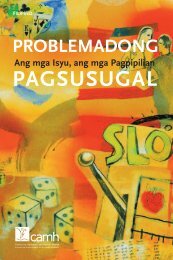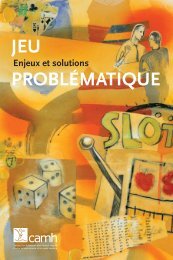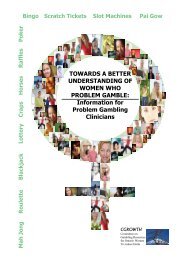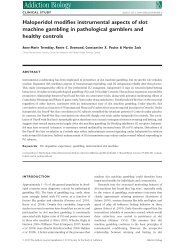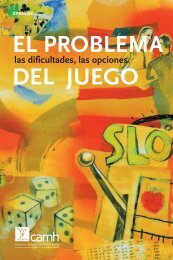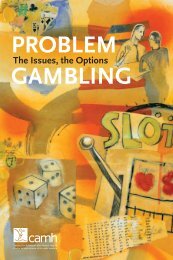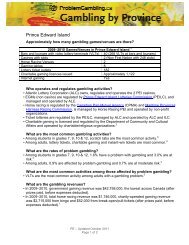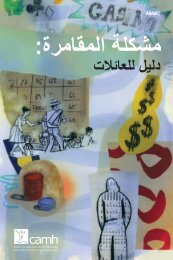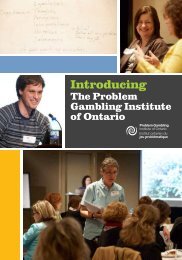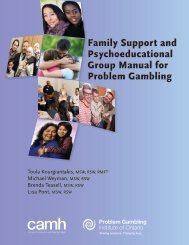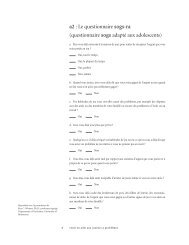Youth Making Choices: Gambling Prevention Program
Youth Making Choices: Gambling Prevention Program
Youth Making Choices: Gambling Prevention Program
You also want an ePaper? Increase the reach of your titles
YUMPU automatically turns print PDFs into web optimized ePapers that Google loves.
Unit 7: Reducing RiskLesson PlanMinds On> Establishing a positive learning environment> Connecting to prior learning and/or experiences> Setting the context for learningConnectionsL: LiteracyML: MathematicalLiteracyAfL, AoL: Assessmentfor/of LearningSC: Skill ContinuaWhole Class• Students engage in a Jeopardy!-style game (Student Resource 1:Jeopardy Game), winning points with their responses about variablesthat are positive and negative factors of a healthy lifestyle.• Teacher helps students to review material of past classes and focus onthe importance of maintaining a healthy lifestyle to reduce the risk ofany problems.• Add to word wall if necessary (collection of terms developed over thestudy of this theme and left on display in the classroom).AfL: Jeopardy game,Word Wall, AnecdotalCommentsAction> Introducing new learning or extending/reinforcing prior learning> Providing opportunities for practice and application of learning (guided > independent)Whole Class• Students brainstorm items that influence risk and decision making.Teacher Resource 1: Factors That Influence Risk and Decision <strong>Making</strong>.• Students classify brainstorm items into “outer” influences from outsidethe mind and body and “inner” influences. Record on flip charts. Acomparison is made. Based on content, although some influences areclearly inner and some outer, there will be some that are unclear orare linked together. For example, peers can be considered an outerinfluence, but the inner world of wanting to belong to a group interactswith that influence.• Teacher introduces concept of BPSCS model. Teacher Resource 2:Biopsychosocial-Cultural-Spiritual Model• Students each receive a scenario card. Student Resource 2, ScenarioCard—What Is the Problem? Working individually, students will identify theissues in the scenario and place them under the appropriate headings inthe chart.Small Group Sharing• Students join with a group and share their results.Whole Class Debrief• Teacher directed and concentrating on a) humans are complex;b) many influences affect each person on a daily basis; one mustalways understand the underlying motivation of each person’s action(s)and that each high-risk behaviour appears in a different perspectivedepending on the individual’s role and emotional and physical state.AfL: Chart, GraphicOrganizerAfL: Group AnecdotalCommentsAfL: AnecdotalComments<strong>Youth</strong> <strong>Making</strong> <strong>Choices</strong>: <strong>Gambling</strong> <strong>Prevention</strong> <strong>Program</strong>www.Problem<strong>Gambling</strong>.ca7.5




